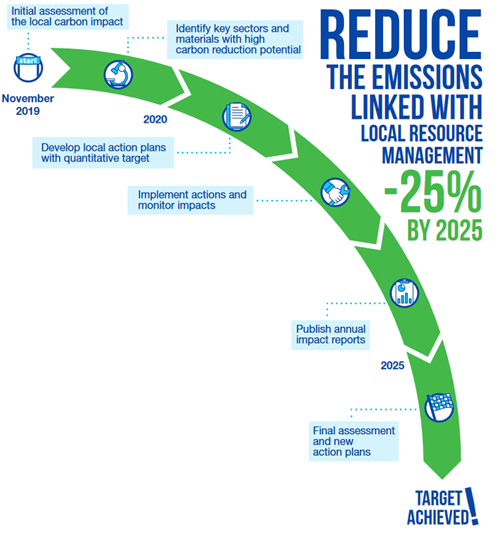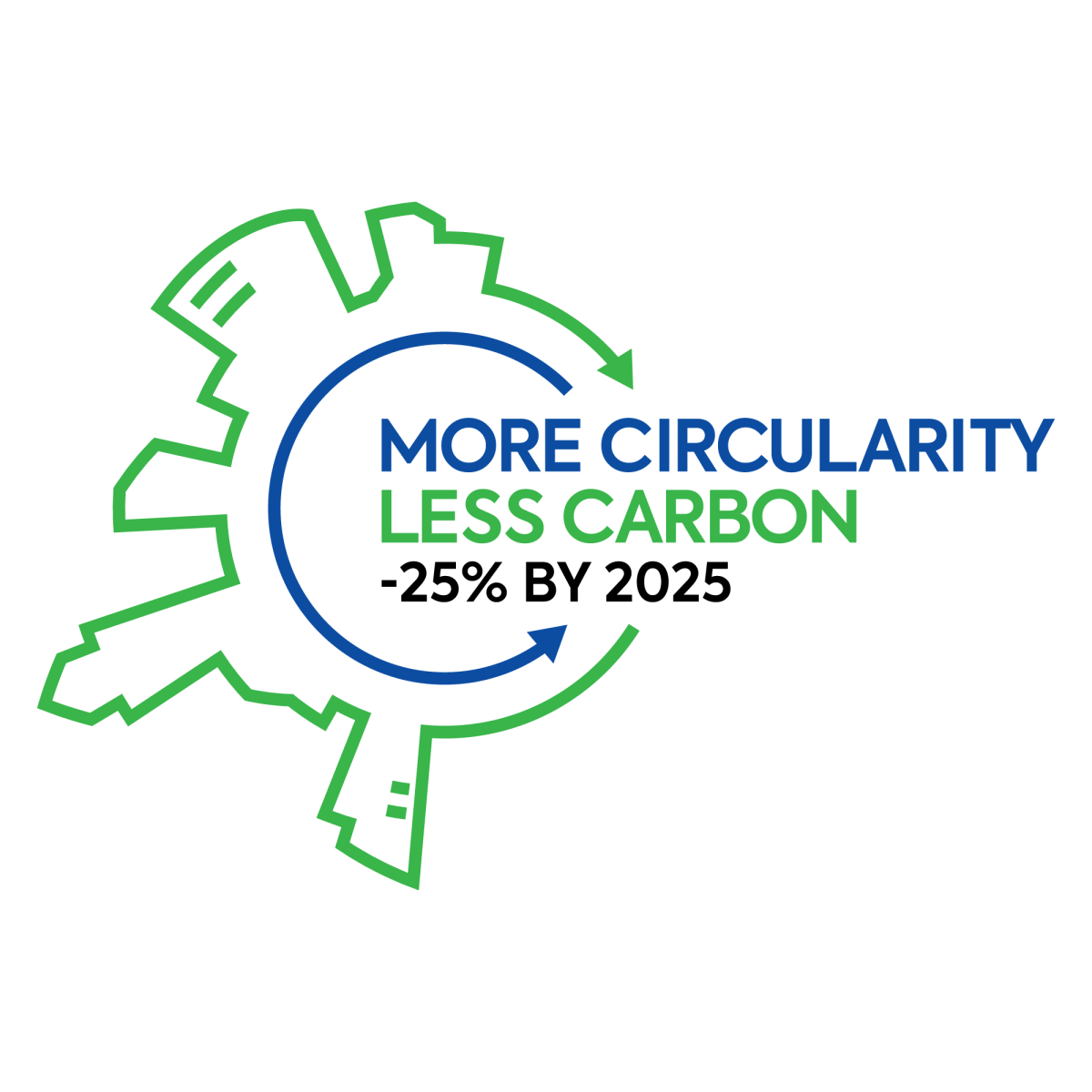The campaign
The More Circularity, Less Carbon campaign will run from November 2019 to November 2025, seeing ACR+ members taking steps at their level to reduce the carbon emissions linked with local resource management by 25% by 2025.
A call to action
Governments are setting ambitious strategies. However, to reach the commitments taken fast, and effective actions are necessary at all levels. ACR+ and its members are ready to act at their local level.
Together, they will contribute to the global fight against climate change while taking into account the local carbon footprint of material resources and waste. They will build on their key role as public authorities, mobilising local stakeholders and citizens, to drive waste prevention and management and advance the circular economy throughout their jurisdictions in order to reduce carbon impacts. Their goal?
Reduce the emissions linked with local resource management by 25% by 2025
Activities
Behind its ambitious goal, the campaign takes into account the diversity of contexts, scope of actions and policy instruments across participating authorities. Participating members will assess their carbon footprint, set their own action plans, monitor the results, and put in common their good practices and findings, under the coordination of ACR+ secretariat.
They will benefit from the following activities:
- Exchange good practices;
- Conduct cross analysis with annual reports;
- Improve and mainstream the inclusion of carbon consideration in local circular economy policies;
- Benefit from tools and methodologies open to all, with the assistance of ACR+ Secretariat for the collection of data and the analysis of results.

The Carbon Metric International, toward climate-oriented strategies
To go beyond weight-based waste measurement a specific tool will be developed: the Carbon Metric International. This will be adapted from the Scottish Carbon Metric, which has been used by Zero Waste Scotland since 2011 to measure the whole life carbon impacts of Scotland’s waste, regardless of where in the world they occur. It includes the emissions from resource extraction and manufacturing of the products that turned into waste. This type of carbon accounting gives a more complete picture of the impacts of products, allowing decision makers to prioritise their efforts for maximum carbon savings.




